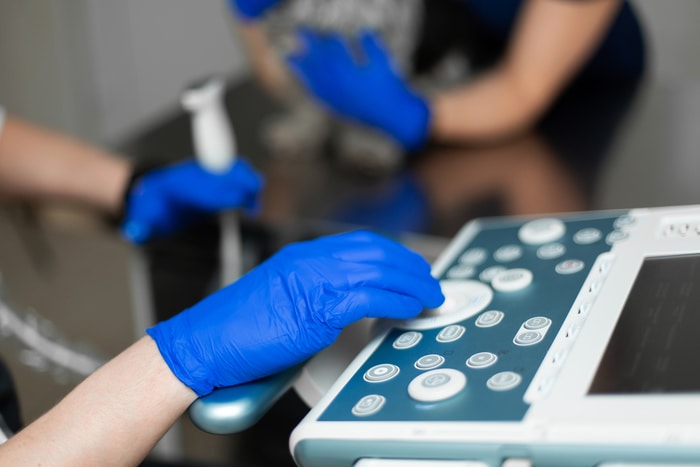
Imaging will always enjoy prominence in veterinary medicine. Nothing can replace the ability to visualize what is occurring within a patient’s body. Ultrasound, specifically, is becoming an increasingly useful tool as the knowledge base of veterinarians increases.
As pet owners begin to expect higher standards of care for their furry companions, ultrasound takes on more importance. Ultrasonography readily establishes a clinician as an authority in diagnostic techniques. Progressive clients relate as easily to the ultrasound as they do to radiographs, so ultrasonography can also develop trust.
How is ultrasound useful in veterinary medicine?
When animal owners think about imaging, they often only visualize radiographs. While X-rays are vital in practices, it is crucial to offer as much diagnostic capacity as possible.
Like radiographs, veterinary ultrasound offers a noninvasive means to examine internal structures. Contrary to X-rays, it uses sound waves to create a real-time image. The result is a different view that can give a clinician additional tools to solve a case.
Why choose ultrasound over other imaging equipment?
Imaging equipment is not interchangeable for the most part. There are specific diagnostic cases where ultrasound is more useful than other tools.
CT and MRI
Computed tomography and magnetic resonance imaging are both impractical for most general practitioners. Many clients expect to visit a specialist if their pets require advanced imaging such. The most striking difference between either CT or MRI and ultrasound is the cost of the equipment and expense to use. Ultrasound machines have the potential to be portable, whereas CT and MRI equipment do not. Veterinarians can offer a great and affordable service if they can perform ultrasound in their clinics.
MRI provides more detail than any of the other imaging techniques. It also allows for greater ease in acquiring computer-enhanced images than ultrasound. However, it requires anesthesia and a lot more time.
CT gives clinicians much more detail than a radiograph. Ultrasound is still superior to CT for assessing soft tissue structure in real-time.
Ultrasound Versus Radiographs
Radiographs are more useful than ultrasound to evaluate dense tissues such as bones and gas-filled structures like the lungs and stomach. Occasionally, a radiograph is better for visualizing foreign bodies in the intestinal tract. Ultrasound is superior for evaluation of fluid, intra-organ tumors, and the heart.
How to choose an ultrasound machine
There are several factors veterinarians need to take into consideration before choosing an ultrasound for their practices.
Evaluating the Needs of a Veterinary Clinic
A veterinarian who performs a few pregnancy checks a month on dogs has many different needs in an ultrasound machine than one who looks for adrenal tumors in ferrets. Since clients are the driving force of any clinic, it is crucial to determine what will best meet their expectations.
The most basic micro convex probe should have a frequency range between 3 to 9 MHz for companion animals. You may require a higher frequency probe for large patients. Frequency determines soft tissue penetration.
Black and white images are suitable for most practices. They can provide remarkable detail. However, color flow Doppler is indispensable for cardiac evaluations. Doppler and other features become more accessible to general practitioners as prices come down. Other considerations are video clips and network or telecommunication capabilities. Again, these become more important as client expectations increase and veterinarians move towards telemedicine. Remote-assisted diagnostics are invaluable additions to client services.
Portable Ultrasound
Economical and convenient, portable ultrasounds provide phenomenal flexibility. Gone are the days where a pet needs to be in a particular room to receive an immediate ultrasound. Clinicians can even perform ultrasonographic evaluations on house calls.
Performing an ultrasound from a tablet or a smartphone is an exciting option.
Keep it Simple
Clinicians want to focus on quality in an ultrasound machine, of course. Excellent images are essential not only for precise diagnoses but also to provide usable data for specialists and consultants. There are many high-quality veterinary ultrasounds to choose from. Some have speckle reduction and an LCD. Others use digital beams to improve image resolution.
However, experts also stress the importance of picking a simple machine. User-friendly functions like fewer knobs or touch-screen controls enable the operator to focus on diagnostic images instead of how to work the machine.
Veterinary ultrasounds allow modern veterinarians to expand the diagnostic repertoire they can offer to their patients, clients, and associates.


